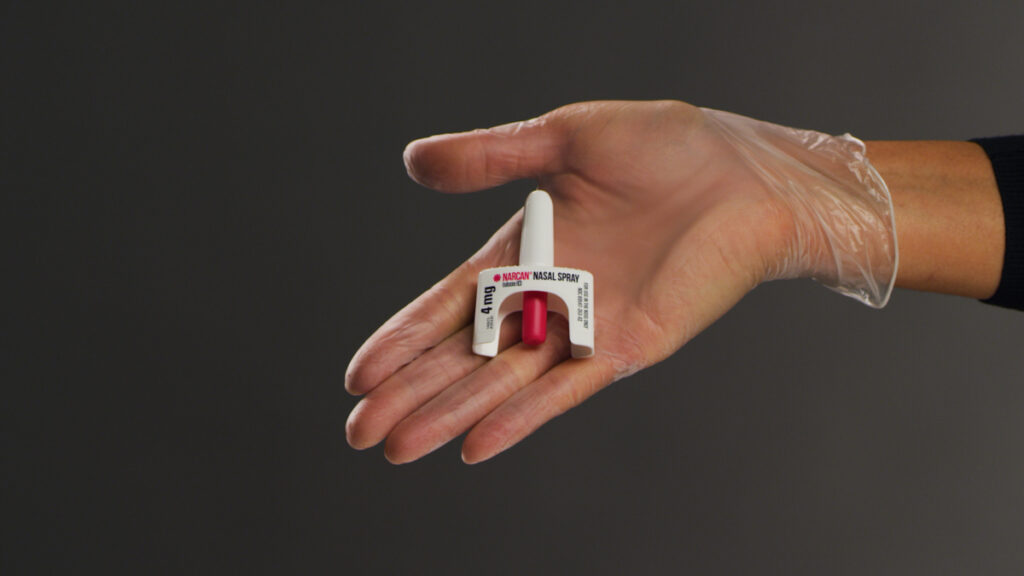Biopharma company Emergent BioSolutions has made a name for itself in the battle against the opioid epidemic in the US. The US Food and Drug Administration (FDA) has recently approved the company’s naloxone hydrochloride nasal spray called Narcan for over-the-counter (OTC), non-prescription use.
As the first OTC naloxone product approved by the FDA, Narcan is expected to be sold directly to consumers without a prescription as an emergency life-saving medication to reverse opioid overdose.
Narcan nasal spray contains a single 4 mg dose of naloxone hydrochloride, which is administered intranasally. It is not a substitute for emergency medical care, but provides immediate, temporary treatment for known or suspected opioid overdose.
Opioid overdose is a leading cause of accidental death in the US.
Drug overdose in general is a huge public health issue in the US. According to the US Centers for Disease Control and Prevention (CDC), there was an estimated 107,622 drug overdose deaths recorded in 2021, a nearly 15 percent increase from the 93,655 deaths estimated in 2020.
Opioids are commonly used for pain treatment or management due to their analgesic and sedative effects. They work by interacting with opioid receptors in the brain. The common prescription opioids include oxycodone, morphine and hydrocodone, among others.
The symptoms of opioid overdose include pinpoint pupils, unconsciousness and difficulties with breathing. Naloxone has been widely used to prevent death from opioid overdose if administered in time.
How Does Narcan Work?
The medical ingredient of Narcan is naloxone hydrochloride, it is an opioid antagonist that decreases opioid effects by competing for the same receptor sites. By blocking the effects of opiates on the brain, Narcan can effectively reverse the effects of opioids such as respiratory depression, sedation and hypotension.
Narcan nasal spray (4 mg) has been shown to have greater maximal plasma concentration, longer half-life and comparable time to maximal plasma concentration compared to traditional intramuscular injection (IM) treatment for opioid overdose.
How Long Does It Take for Narcan to Work?
Naloxone hydrochloride is rapidly distributed in the blood for intranasal administration with a single dose of Narcan. Naloxone plasma concentrations are detectable at 2.5 minutes, and it usually takes 30 to 90 minutes for naloxone to start reversing opioid overdose. According to the pharmacokinetics study, naloxone hydrochloride is metabolized in the liver and excreted in urine.
Where Can You Get Narcan?
Emergent BioSolutions says that Narcan nasal spray will be available on US shelves and at online retailers by the end of this summer.
The FDA says that Narcan would be sold online directly to consumers as well as in locations such as drug stores, grocery stores, convenience stores and gas stations.
From Prescription to Non-Prescription (Rx-to-OTC) Approval
Naloxone was originally approved by the FDA in 1971, and it has been widely used for decades to treat opioid overdoses. Naloxone nasal spray was first approved by the FDA in 2015; however, it was a prescription medicine which was limited to behind-the-counter pharmacy or health care department distribution.
Narcan shares the same formulation, principle, intended use and prescription strength (4 mg) as the initially prescribed naloxone spray.
“Today’s landmark FDA OTC approval for Narcan nasal spray marks a historic milestone as we have delivered on our commitment to make this important emergency treatment widely accessible, given the alarming rates of opioid overdoses occurring across the country,” said Robert G. Kramer, president and CEO of Emergent BioSolutions, in the company’s press release.
Since its launch in the community setting in 2016, more than 44 million doses of Narcan nasal spray have been distributed. The prescription-to-OTC approval of Narcan is expected to improve the access to naloxone in communities and help reduce opioid overdose injury or death across the US.
“Today’s approval of OTC naloxone nasal spray will help improve access to naloxone, increase the number of locations where it’s available and help reduce opioid overdose deaths throughout the country”, said FDA Commissioner Robert M. Califf, MD, in the FDA’s press release.
The effectiveness and safety of Narcan nasal spray for OTC use have been supported by human factors studies, pharmacovigilance and post-marketing safety data, resulting in its successful approval for non-prescription/OTC status. Furthermore, it has been shown to be easily and safely used by the lay person without any supervision by healthcare professionals, supporting its suitability as an OTC medication.
In addition to demonstrating comparable safety and efficacy, it is crucial for the manufacturer to provide clear and user-friendly instructions for using the product, supported by satisfactory clinical data to ensure proper usage by consumers. The FDA is dedicated to facilitating the evaluation and assessment of naloxone products, particularly those with potential for OTC use, to enable their transition from prescription to non-prescription status.
Another OTC Naloxone Nasal Spray Expected Soon
Harm Reduction Therapeutics, another leading pharmaceutical company, is hoping to receive FDA approval for their RiVive naloxone nasal spray in July 2023 and to launch the product in 2024.
Last month, the company has signed a commercial supply agreement with Catalent, a contract development and manufacturing organization (CDMO). Catalent will be responsible for the commercial manufacturing of RiVive. With state-of-the-art technology and a 180,000 square-foot inhalation development facility in Morrisville, North Carolina, Catalent will make a significant contribution to the production of OTC naloxone nasal spray.
This agreement represents a major milestone in increasing the availability and access of naloxone nasal spray to the public and reducing opioid overdose deaths in the community.












Join or login to leave a comment
JOIN LOGIN